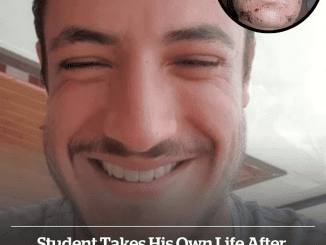Struggling to fall asleep can feel like a cruel joke. You’re exhausted, your body begs for rest, but your brain? It’s busy replaying tomorrow’s schedule, last week’s awkward conversations, and existential questions at 2 a.m. Sound familiar? If you’re someone who battles chronic insomnia, there’s a game-changing solution you might not have tried yet—and it only takes one minute.
It’s called the 4-7-8 breathing technique, and for thousands of people, it’s become a nightly ritual that helps them finally drift off to sleep.
Why Sleep Matters More Than You Think

Before diving into the technique, let’s talk about why sleep is so essential—and dangerous to ignore.
Research published in the Journal of the American Heart Association followed 1,654 adults over eight years and found some eye-opening (pun intended) results. Adults with high blood pressure or diabetes who slept less than six hours a night had twice the risk of dying from heart disease or stroke. Even more alarming: people already diagnosed with heart disease or stroke had triple the risk of dying from cancer if they were sleep-deprived.
Sleep isn’t just about feeling rested. It’s about keeping your heart healthy, your mind sharp, and your body functioning. And yet, even when we know how important it is, actually falling asleep can feel impossible.
Why Can’t We Sleep Even When We Want To?
One of the biggest culprits behind insomnia is an overstimulated mind. You know the drill: You’re physically in bed, but mentally you’re everywhere else. Deadlines, texts you forgot to reply to, what you said in that meeting—it all floods in the second your head hits the pillow.
That’s where breathwork enters the picture.
Introducing the 4-7-8 Breathing Technique
Developed by Dr. Andrew Weil, a renowned expert in integrative medicine, the 4-7-8 method is based on ancient yogic breathing practices. It’s designed to calm your nervous system, slow your heart rate, and shift your body into a state of deep relaxation.
Unlike sleep aids or melatonin, there are no side effects. Just you, your breath, and a little patience.
Video : Try This and Fall Asleep Super Fast! Dr. Mandell
How to Do the 4-7-8 Breathing Technique
Here’s how to perform the exercise in six easy steps:
1. Sit or lie down comfortably
Make sure your back is straight if you’re sitting. If you’re already in bed, that’s perfect.
2. Position your tongue
Place the tip of your tongue against the ridge behind your upper front teeth. Keep it there the entire time.
3. Exhale completely through your mouth
Do this with a “whoosh” sound. Imagine pushing all the stale air out of your lungs.
4. Inhale through your nose for a count of 4
Keep it smooth and quiet.
5. Hold your breath for a count of 7
This is where the magic starts. It gives your body time to absorb oxygen and relax.
6. Exhale slowly through your mouth for a count of 8
Make another “whoosh” sound. Feel the stress leaving your body with the breath.
That’s one full cycle. Start with four cycles before bed. Over time, you can build up to eight cycles per session.
Why It Works: The Science Behind the Calm
The 4-7-8 technique slows your breathing and heart rate while promoting oxygen exchange and relaxation. But more importantly, it shifts your body from “fight or flight” mode into “rest and digest.”

Here’s what that means:
- Reduces anxiety: By focusing on your breath, you silence the anxious thoughts racing through your mind.
- Activates the parasympathetic nervous system: This is your body’s natural relaxation system.
- Lowers heart rate and blood pressure: Making it easier to transition into deep sleep.
- Distracts the brain: Instead of lying awake worrying, you’re counting and focusing on your breath.
Many users say they feel a bit lightheaded at first—that’s normal. It’s your body adjusting to more controlled and deeper breathing.
Not a Sleep Cure—But a Powerful Tool
Let’s be real. The 4-7-8 method isn’t a magic wand. If you’re dealing with major sleep disorders, underlying health issues, or emotional trauma, you’ll likely need a more comprehensive approach. But this technique is a powerful tool in your sleep toolbox—and it’s completely free.
It’s especially effective when combined with other sleep-friendly habits:
- Avoid caffeine or alcohol before bed
- Keep your room cool, dark, and quiet
- Limit screen time at least 30 minutes before sleeping
- Create a consistent bedtime routine
Consistency Is Key
Like with any habit, the real power of the 4-7-8 technique comes from daily practice. You can’t expect one night of breathing to undo years of stress or poor sleep. But with repetition, this technique becomes almost automatic—something your body begins to associate with winding down.
Video : Deep Sleep Hypnosis, Meditation for Sleep & Relaxation
And that’s the ultimate goal: reprogramming your body and mind to welcome sleep, not resist it.
Final Thoughts: One Breath at a Time
If you’ve been losing sleep night after night, it’s easy to feel frustrated and even hopeless. But sometimes, the simplest solutions bring the biggest relief.
The 4-7-8 breathing technique isn’t flashy. It doesn’t involve expensive gadgets or miracle pills. It’s just your breath, your focus, and a few quiet minutes. And yet, it can transform how you approach sleep forever.
So tonight, when the lights go out and your thoughts start to spiral, try this: inhale for 4… hold for 7… exhale for 8. Let your breath do what your mind won’t—bring you peace.


